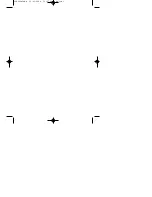
5
S
I
C
K
O
p
t
i
c
-
E
l
e
c
t
r
o
n
i
c
B
a
r
C
o
d
e
S
c
a
n
n
e
r
s
1
I n t r o d u c t i o n
SECTION 1- INTRODUCTION
THEORY OF OPERATION
The CLV uses a scanning laser beam to detect the contrast between the
light and dark portions (bars and spaces) of a bar code. Figure 1-1 shows
the system in simplified form. In operation, light from the laser diode (1) is
directed by the corner mirror (3) onto one facet of the mirror wheel (2).
Rotation of the mirror wheel in the direction of the arrow causes the beam
exiting through the window to scan at a 60° degree total angle (4). When
the scanning beam strikes a bar code in the reading plane (6), a portion of
the incident light is reflected back through the window onto the mirror wheel
then onto the corner mirror. From the corner mirror, the reflected beam
passes through the filter (10), is converted to an electrical signal by the pho-
toreceiver (11), amplified (12), and then digitized in the binary conversion
stage (13). This digitized signal (8) which now matches the bar code sym-
bology (7) is routed to the integrated decoder where it is decoded to recon-
struct the information contained in it. System output is transmitted to a ter-
minal, a printer, or a host device.
LIGHT SOURCE
The standard CLV uses a visible red light (670 nm) laser diode for the scan-
ning operation. An alternative infrared invisible laser source is available
where needed for optimum contrast. Maximum average power at the read-
ing window is limited to 1.0 mW, giving a CDRH classification of safety class
II for both red light and infrared versions. The user is cautioned not to look
into the laser beam or at direct reflections of the beam.
This Installation and Operation Manual should provide you with the basic information you need to install and start operation of
your CLV 410/412 Bar Code Scanner. For information on using the CLV Utility Software, see SICK Optic-Electronic’s publication
“CLV Utility Software Guide ” part number 7 020 809. This extensive manual contains information applicable to many of the CLV
Bar Code Scanners.
60
¡
1
2
3
6
10
4
5
Display
Evaluation
(Decoder)
Interfaces
Control
9
3
11
12
13
7
8
(1) Laser diode with focusing device
(2) Polygon mirror wheel
(3) Corner mirror
(4) Opening angle
(5) Reading beam
(6) Reading plane
(7) Bar code signal
(8) Digital signal
(9) Oscillating mirror
(10) Filter
(11) Photoreceiver
(12) Amplifier
(13) Binary conversion stage
Figure 1-1 Operation Principle of the CLV - Simplified








































